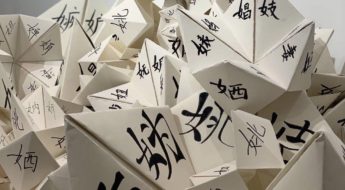Letter from the Editors | Vol. 6 No. 1
The Hundred River Review’s 6th Volume is a compilation of masterful student writing that is woven together by shared, central themes, from the multi-faceted nature of gender to an exploration of minority women’s liberation against a patriarchal backdrop. The journal begins with “From Self to ‘Gendered Self’: Women’s Tragedy Under Patriarchy as Depicted in Raise the Red Lantern” by Ella Zhang, an essay that employs cross-cultural and transhistorical analysis by using Judith Butler’s theory about the “gendered self” as a lens to critique Zhang Yimou’s film Raise the Red Lantern. Zhang’s essay exposes how gender politics affected women in Republican-era China who aspired to express their authentic selves despite ancient patriarchal oppression. Next is “Taking Ownership of Female Sexuality in Dirty Computer” by Aimee Burlamacchi, an essay that explores how Janelle Monáe’s “emotion picture” Dirty Computer uses a feminist approach when presenting female sexuality in her music videos. Through a combination of using Afrofuturism as a lens and analyzing Dirty Computer’s dystopian setting, Burlamacchi’s writing illuminates how Monáe artistically rejects the male gaze in favor of overt expression of sexuality, thus breaking the stereotypical “tame” identity that is often expected of women in music videos. Thirdly is “The Little Black Dress: An Embodiment of Femininity” by Ishita Jaiswal, a work that explores the legacy and socio-cultural impact of the fashion staple, the Little Black Dress (LBD), which Jaiswal argues is a representation of empowered femininity and freedom. Jaiswal’s work also argues that the iconic dress incites a sense of liberation to either embrace or challenge how this stereotypically feminist attire may transcend aesthetics. Finally is “Bubbles Never Touch the Sky: the Shanghai Ladies and Class Mobility” by Yi Er Cao, a multi-layered exploration of how class significantly shapes the presentation of womanhood in current day Shanghai through the story of the “Shanghai Ladies,” a WeChat group made by and for low-income Chinese women to split the costs of luxury goods. Cao thoroughly investigates how photographing themselves with shared luxury goods may have helped the Shanghai Ladies construct a new online identity to achieve “virtual” mobility, which led to moral quandaries and online backlash. All four essays explore important realities related to gender, femininity, race, and liberation, intersections which illuminate the variety of women’s lived experiences in the arts and life.
Beyond thematic similarities, all four essays truly exemplify model writing in NYU’s Core Writing courses, as they weave together insightful analysis, blend in supportive evidence from the text, and shape thoughtful arguments. However, these final products were an amalgamation of many drafts, close-readings from partnered editors who collaborated to refine their work in order to serve as models for future writing students. We wanted to include this excerpt of the “Gendered Self” to show how the editors dissected the first paragraph of the essay. This includes comments on how to contextualize the introduction with more background information, how to create more flow between sentences via transitions, which terms and ideas could use further clarification, a point about grammar, how and where to construct a thesis “road map” to establish a clear structure for the paper, tips on first person language, and word choice. Our intention with including these specific types of comments is to provide a model highlighting how to address the most common concerns students have when visiting the Academic Resource Center to improve their drafts. We’d like to emphasize that the editing process spanned over four revisions, which underscores the laborious nature of writing as well as the importance of collaborating with others to sharpen one’s approach to writing research and analysis based essays for NYUSH’s core writing courses. In its history of six volumes, this is the first time the Hundred River Review has included an essay drafting “model.” We hope to continue publishing journals that highlight both the products and process of the detail-oriented writing and editing exemplified by selected essays. By doing so, we also hope to dismantle the misconceptions about what “good writing” is as well as the reality that model writing takes commitment, time, and practice. We are incredibly proud of this year’s selected writers as well as the journal’s organically streamlined theme that highlights important stories, research, theories, and thoughts surrounding important issues that affect our own self-conception as well as our navigation of the world around us.
Sincerely,
Marcos L. Martínez and Sabrina Marie Vera
The Hundred River Review Editorial Board



Recent Comments